Financial Toxicity, Administrative Sludge Among Roadblocks for Specialty Oncology Care
Strict utilization management policies have led some patients to make decisions like skipping medication doses.
Like millions of other Americans undergoing cancer treatment, Patricia J. Goldsmith began experiencing a difficult to manage side effect after surgery and treatment.
“My surgeon was absolutely amazing and prescribed medication,” Goldsmith, CEO of CancerCare, explained. “That was literally life changing. It was not lifesaving, but it gave me back my quality of life.”
But then, Goldsmith experienced a setback: her insurance company notified her that her previously covered medication was no longer on the formulary. “The copay didn’t increase, they just took it off the formulary,” she said.
After multiple unsuccessful appeals, Goldsmith’s care team suggested she try the substitute medication. Before the formulary change, she had been taking 3 pills per day. After the change, she went to the pharmacy to pick up her new medication and was presented with 2 large boxes of powder. “I was to mix 6 packets a day—each packet individually—with 8 ounces of fruit juice or water. That was the substitute,” she explained. When she reached out to her insurance company for another appeal, a representative informed her that the powder could be mixed with 8 ounces of applesauce as well.
To this day, she said, her original medication is not on formulary. “In spite of CancerCare paying over $58,000 a year in premiums for a family health plan, I pay out of pocket for my medication.”
Goldsmith shared her own story, and highlighted several others, during her presentation at the American Society for Health-Systems Pharmacists (ASHP) Summer Meetings and Exhibition, held June 11 through 15 in Phoenix, Arizona.1
In today’s payer and PBM landscape, a straight line can be drawn between stringent utilization management policies and a host of patient issues, including increased medication nonadherence and medical benefit costs and decreased productivity and employee satisfaction.
“You probably know a lot of this,” she told the audience, “but financial toxicity is very, very real. Greater than 50% of cancer patients experience this toxicity, and patients who report significant financial worry at the start of treatment are twice as likely to risk dying, compared [with] similar patients.” And, she explained, out of pocket costs are directly tied to prescription abandonment. With an out-of-pocket cost of $0, prescription abandonment is less than 5%. Out of pocket costs of $125 or more have a prescription abandonment rate of 45%, and out of pocket costs more than $500 see an abandonment rate of 60%.
“That is not good news, and has many serious consequences,” said Goldsmith.
Patients also struggle to overcome what Goldsmith termed “administrative sludge”—a term that usually, she said “opens the eyes of employers” to the underlying costs of financial toxicity. “Remember the term ‘sludge,’ because that is exactly what happens…on the part of insurers and PBMs with respect to what they put you and patients through.”
Goldsmith cited the results of a study from the Stanford Business School that identified a loss to the US economy of $21.6 billion in lost time due to employees spending time on the phone with insurance representatives, $26 billion lost due to extra absences resulting from employees dealing with health insurance representatives, and $95 billion lost due to reduced productivity from low employee satisfaction, frustration, and anger with employer-sponsored health plans. All told, she noted, Americans spend 12 million hours per week calling their health insurance companies—not including the time spent by pharmacists and other health care providers spend addressing these issues for their patients.
To address this issue, CancerCare created an employer toolkit to educate employers, providing tools and action steps to maximize their employer-provided health insurance plans. The toolkit focuses on the areas of formulary design, pre-authorization step therapy, copay accumulator adjustment programs, appeal processes, specialty pharmacy programs, and cost-sharing, among others. Later this year, the organization will release a patient-facing aspect of the toolkit that will include plain speech fact sheets to educate patients and caregivers about topics like formulary design and step therapy, among others.
“In an ideal world, if you are dealing with a player who has the best interests of patients at heart, they would want to ensure that the treatment is right the first time [and] get the patient the most effective treatment,” said Goldsmith. “That’s very difficult in a world that’s operating with no transparency.”
Reference
- Goldsmith PJ, McGugan M. State of specialty practice: The power of passion-driven care. Presented at: American Society of Health-System Pharmacists Summer Meetings & Exhibition; June 11-15, 2022; Phoenix, AZ.













